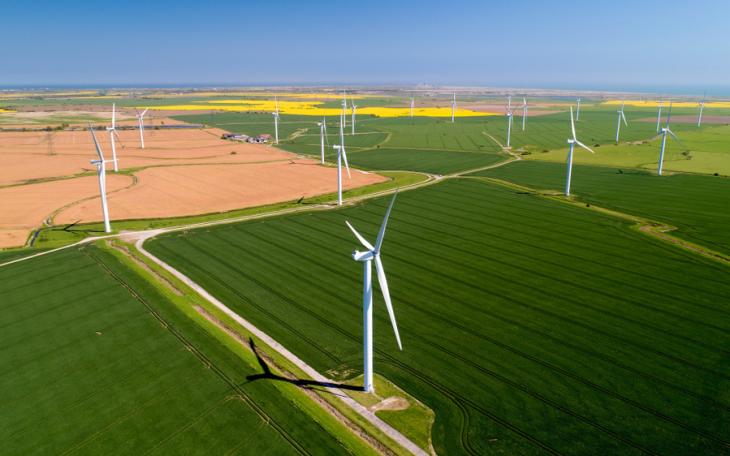Could there be trouble brewing in the shires as a result of COP26?

By Paul Kelly
“I see the weather has turned out s**t again”, commented Gary our famously profane, regular postman as he handed me yet more unsolicited mail.
It has to be said that he had a point as this May looks like it has the potential to be the wettest on record, according to the Met Office, following damply on from the coldest ever May Bank Holiday.
In fact, so much so that it transpired Gary and I shared a dirty little secret. We both still had the central heating on!
Reflecting on this took me back to my childhood, growing up in a small Sussex town during the 60s and 70s. That is the 1970s if any of my colleagues are reading this!
In those distant days coal was king. By that, I don’t mean happy and merry old King Cole. But miserable, dirty coal that dominated the energy production of the UK. As a child I remember my father cursing about the union barons that acted as the aristocracy of coal leading strike after strike. To me Mick McGahey, Joe Gormley and Arthur Scargill were cast as demons from some sort of other worldly hell that was forcing the country to adopt a 3-day week, in the bleak opening months of 1974. In effect, the Central Electricity Generating Board rationed the commercial users of electricity to three days of consumption each week. As children, we went to bed on most nights of those terrible weeks taking candles for light during the long power cuts, that felt like a daily occurrence. Small wonder the baby boom can be traced to this point in time!
As a southerner, coal came literally from another country, unless you lived in parts of east Kent. The communities that produced this life blood of the nation only became real to me after going to the cinema to see “Kes,” the seminal Ken Loach film, made in 1969 and shot in the South Yorkshire town of Hoyland, where Barry Hines, who wrote the original novel it was based, on grew up.
But those days have long gone and they have done so because coal will no longer be used to make electricity in the UK after 2024. This is in line with recent report from the International Energy Agency (IEA) that proposes no new fossil fuel boilers be sold after 2025 and no petrol or diesel cars by 2035. This is because the energy sector accounts for 75% of greenhouse gas emissions. Worldwide the percentage of energy coming from renewable sources is roughly 29% but it needs to be 90% by 2050 if net zero is to be achieved.
Phasing energy sources out is perhaps the easy bit of the equation. Onboarding new sources of renewable energy, at utility scale and at pace, is the difficult bit especially on a crowded island like ours.
Back in the days of my youth, we southerners looked to the north and west of the nation to provide our energy, at utility scale, as that was where the coal mostly was, and I suspect we did not really care enough about the impacts this had on those communities. Now it is the turn of the south and the east because that is where the sun mostly shines, coupled with wind from the North Sea. The question is whether my fellow southerners are prepared to do our bit for the nation? This issue is exacerbated because the problem for the current Government is that the shires are their electoral heartland, despite their recent gains in the “Red Wall”.
There is no escaping the fact that utility scale renewables projects require space to generate the requisite amounts of clean energy envisaged by the Government. Even those huge wind turbines, parked out of sight and mind in the North Sea (that Boris sets such store by), will need to be connected to the mainland at many more points in the east than is currently the case. Also those glorious warm , high pressure systems we all love in the south often mean that the wind does not always blow sufficiently to create much energy from. When that happens, we will need utility scale solar to help balance the output, as well as building interconnectors to connect with supplies from Europe. Many of the latter will need to be located in the south and east of the UK because of geography.
The Government has invested much political capital behind its commitment to COP26, but to actually deliver on the promise it will have to level with the people of the south and east about what this may mean for the countryside, so many of us have learned to take for granted. The required new renewable energy infrastructure will need to compete for space with new housing, roads and other essentials we all demand to support our lifestyles. However, this plays out there will be an appreciable impact on communities that will need to be mitigated. That is the on the ground reality.
So far, the Government has shown precious little appetite to educate communities on the need for change. It will have to start soon, or it is going to store up serious trouble ahead.








